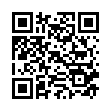|
This article is cited in 10 scientific papers (total in 10 papers)
Einstein Gravity, Lagrange–Finsler Geometry, and Nonsymmetric Metrics
Sergiu I. Vacaruab
a Faculty of Mathematics, University "Al. I. Cuza" Iasi, 700506, Iasi, Romania
b The Fields Institute for Research in Mathematical Science, 222 College Street, 2d Floor, Toronto, M5T 3J1, Canada
Abstract:
We formulate an approach to the geometry of Riemann–Cartan spaces provided with nonholonomic distributions defined by generic off-diagonal and nonsymmetric metrics inducing effective nonlinear and affine connections. Such geometries can be modelled by moving nonholonomic frames on (pseudo) Riemannian manifolds and describe various types of nonholonomic Einstein, Eisenhart–Moffat and Finsler–Lagrange spaces with connections compatible to a general nonsymmetric metric structure. Elaborating a metrization procedure for arbitrary distinguished connections, we define the class of distinguished linear connections which are compatible with the nonlinear connection and general nonsymmetric metric structures. The nonsymmetric gravity theory is formulated in terms of metric compatible connections. Finally, there are constructed such nonholonomic deformations of geometric structures when the Einstein and/or Lagrange–Finsler manifolds are transformed equivalently into spaces with generic local anisotropy induced by nonsymmetric metrics and generalized connections. We speculate on possible applications of such geometric methods in Einstein and generalized theories of gravity, analogous gravity and geometric mechanics.
Keywords:
nonsymmetric metrics; nonholonomic manifolds; nonlinear connections; Eisenhart–Lagrange spaces; generalized Riemann–Finsler geometry.
Received: June 24, 2008; in final form October 13, 2008; Published online October 23, 2008
Citation:
Sergiu I. Vacaru, “Einstein Gravity, Lagrange–Finsler Geometry, and Nonsymmetric Metrics”, SIGMA, 4 (2008), 071, 29 pp.
Linking options:
https://www.mathnet.ru/eng/sigma324 https://www.mathnet.ru/eng/sigma/v4/p71
|

| Statistics & downloads: |
| Abstract page: | 309 | | Full-text PDF : | 75 | | References: | 31 |
|




 Contact us:
Contact us: Terms of Use
Terms of Use
 Registration to the website
Registration to the website Logotypes
Logotypes








 Citation in format
Citation in format 
